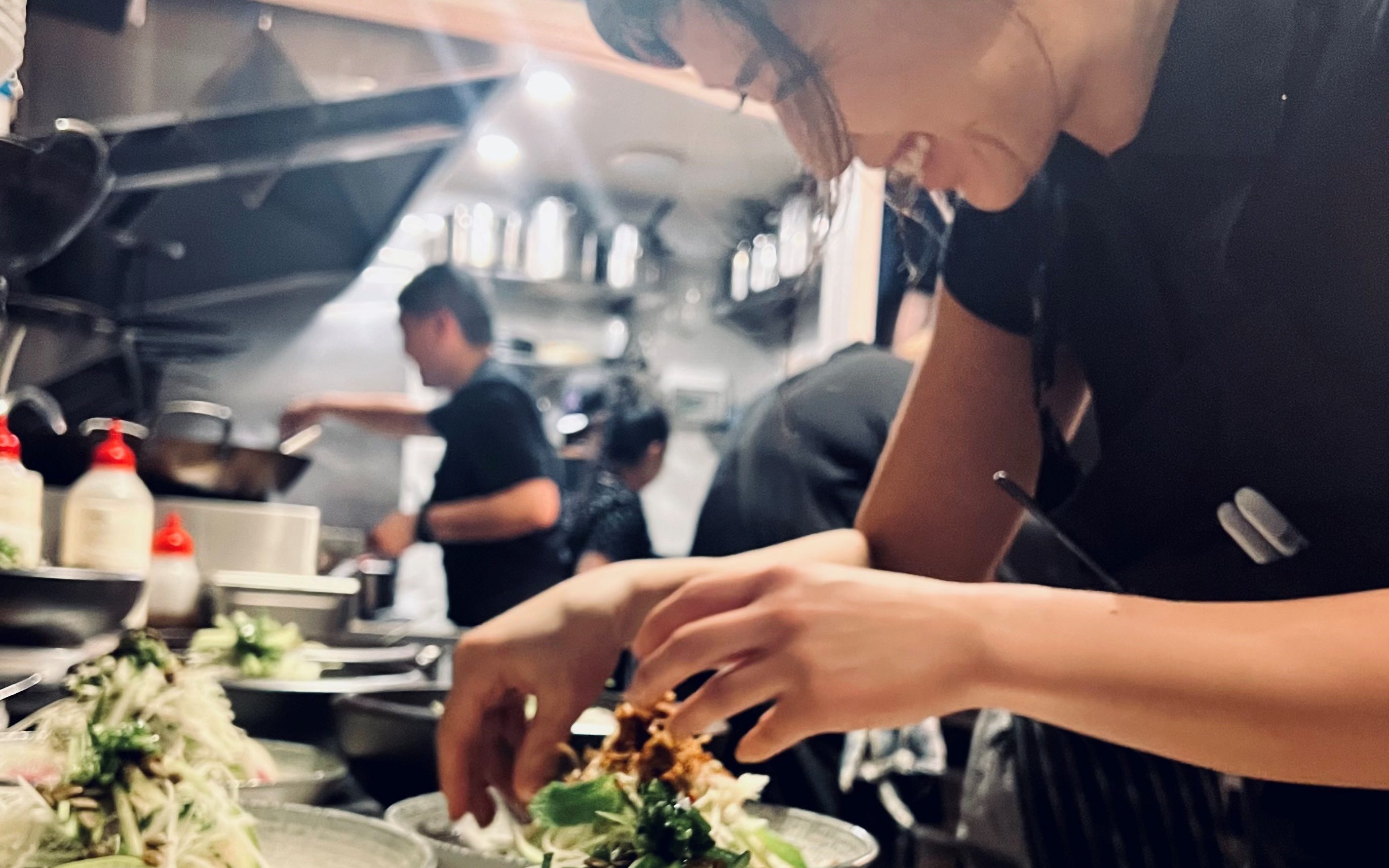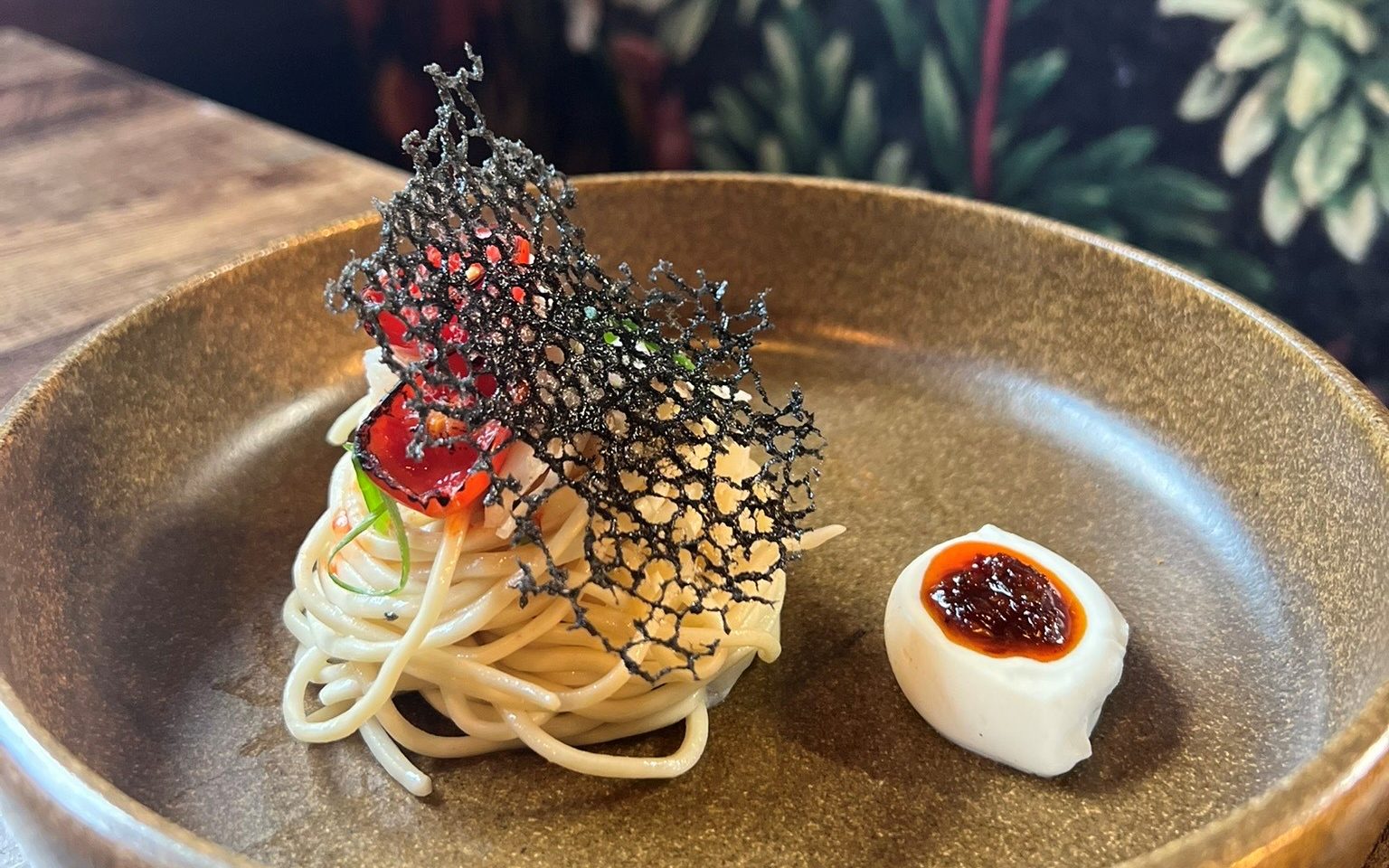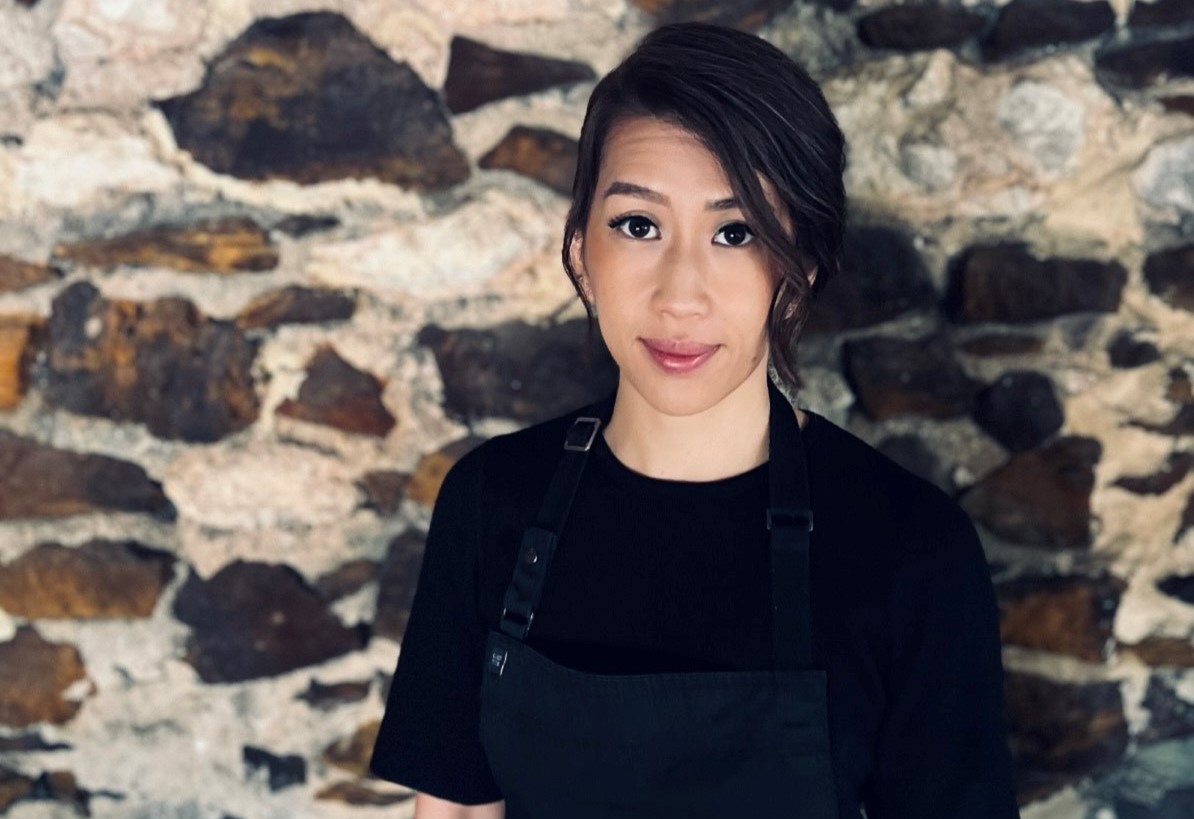Cooking has always been more than an everyday task for South Australian chef Trinh Richards — it’s a way of expressing love. Richards grew up in Adelaide with Vietnamese parents which saw her childhood filled with share-style feasts that brought the family together. “With Vietnamese culture, food is the love language — we don’t use words of affirmation like, ‘I love you’ or hug — I’m not kidding!” laughs the chef.
Today, Richards and her partner Mike are sharing food-led affection with locals and tourists at The Little Rickshaw in Adelaide’s south. Richards runs a collaborative kitchen, where staff and guests play a vital role in defining the South-East Asian offering. The chef speaks to Hospitality about the approach behind the 40-seat restaurant and why it’s important to encourage collaboration in the kitchen.
Trinh Richards’ career in hospitality began after a sea change to South Australia’s
Fleurieu Peninsula. She left the corporate world to work at McLaren Vale wineries,
which also saw her take on an additional role — cooking for the winemaking team.
People soon started hearing about her food, which motivated the budding chef to
open a Vietnamese food stall at the local Aldinga markets.
Each Sunday, Richards served classic Vietnamese dishes — think pork belly with salad, noodles, and mother sauce plus spring rolls. It quickly caught the attention of local marketgoers, with people still requesting the return of her stall today. “We didn’t really advertise, but we still had a line down the street on one of our first days and we sold out,” says Richards. “People still talk about [the pork belly] today and they want it back!”
After the success of the stall, Richards and her husband Mike decided to open something more permanent, and The Little Rickshaw was born. The duo opened the
South-East Asian eatery in a 190-yearold shed that seats 40 guests. While Vietnamese cuisine is at the heart of the restaurant, the menu takes cues from a range of other cuisines including Japanese, Korean, and Nepalese.
The exact influences of The Little Rickshaw aren’t able to be pinpointed, with Richards relying on her surroundings for inspiration. “I knew I wanted to run a kitchen that is a collective of food and people,” says the chef. “So, what’s The Little Rickshaw’s soul? I don’t know. It’s just being generous — to the community, with food, and with flavours.”

The role people play at the eatery is evident in the way Richards runs the kitchen. The chef says every staff member has the opportunity to influence the menu if they wish, which she admits might not be conventional. “You’re here to cook good food, you’re not here to cook my dishes,” she says. “We don’t have a militant, head chef-type structure which is a bit of a culture shock sometimes when trained chefs come into our kitchen.”
Richards says every dish is the result of ideas bouncing around the kitchen. “I’m lucky to have a team who like to travel, eat, and nerd out on new techniques,” says the chef. “We even have a group chat where we’re like, ‘Have you seen this? Have you tried this?’” Creative freedom is no doubt a key factor in staff engagement and retainment. “My thinking is that having some accountability or creative licence makes a job more sustainable,” says Richards. “If you love what you’re doing and are always trying new things, a job is more of a long-term investment.”
The Little Rickshaw’s menu originally started as à la carte when it opened in 2019. But soon enough, Richards decided to shift to a set, banquet-style offering to ensure every guest experiences the food the way the team wants them to. “We do trust customers to come in and order, but sometimes I did feel they didn’t [have] balance despite how much front of house tried to tailor [orders].”
Using sustainable, local, and whole produce is a focus for Richards, which stems from her childhood. “We never grew up in a household where you would get salmon fillets — you’d get the whole fish,” she says. “It’s always been ingrained in me to appreciate produce, whether it’s vegetables straight from the garden or the whole animal.”
The menu currently features dishes such as South Australian octopus confit in Wagyu fat with kimchi reduction; slow-braised beef short ribs with pickled shallots; and a Vietnamese crème caramel with duck yolk ice cream. But chances are by the time this story is published, there’ll be a whole new menu up and running.
“Once something feels like it is done, we move on and try new things,” she says. “For example, if everyone’s bored of a dish and they don’t like cooking it — even if it’s a best seller and customers love it — we take it off.” Richards admits the menu changes quite regularly and once a dish is gone, it won’t return in its original form. “We’ve had so many customer favourites and people asking when certain dishes will return. Things will come back, but they are always reinvented.”

The influence diners have on The Little Rickshaw is also something to be appreciated. “Our customers inspire us as they’re the ones who keep coming back and supporting us,” says Richards. “What comes back in their bowls and on their plates at the end of the day helps shape what we do.”
Richards appreciates her strong following of regulars and goes out of her way to ensure they have a different experience each time they visit by keeping a detailed bookings database. “We have customers who come once a week or fortnight. But we always have something new for them to try every time they dine — we really hang our hat on that one.”
When it comes to customers, the restaurant’s attention to detail has paid dividends, with guests serving as the venue’s main source of marketing. “We don’t really put our name out there — it’s been word-of-mouth and it’s been like that since our infancy,” says Richards. “We’re not trying to be a cookie-cutter [operation]. It’s not perfect, but we try and keep as many people happy as possible.”
Richards hopes to further extend the relationship between the restaurant and its customers by launching a chef’s table. It was something Richards implemented when the venue first opened, but as word spread and bookings increased, they needed the space for extra seating. “We’re trying to bring that back where chefs have direct contact with customers,” says Richards. “We made great friends when we did it previously and it’s what people miss in a way.”
In May, Richards will join the Tasting Australia program for the second time as part of the Sweet, Salty, Sour, Hot masterclass alongside Thi Le (Ca Com, Jeow), Benjamin Cooper (Chin Chin), and Terry Intarakhamhaeng (Soi 38). While she can’t give away too much, she’s excited to work with the chefs to create a three-course South-East Asian feast for guests. “It’ll be really fun because we will be working together collaboratively as opposed to just doing one dish,” says Richards.
As for any upcoming moves, the chef says there are many options on the list, but she’s learned not to plan too much as you never know what’s going to happen. “Mike and I thought we’d be a cool banh mi shop — that was our original plan,” she says. “Now, we just let it happen.”

